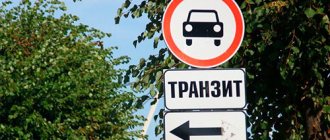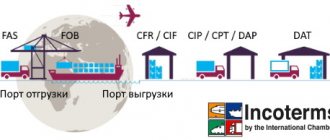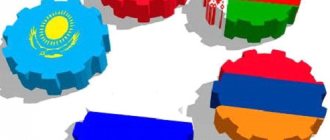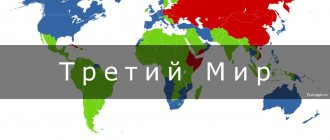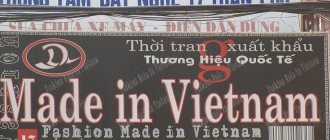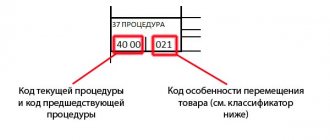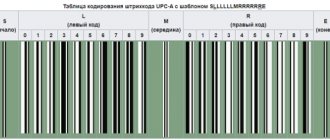Dual-use goods are...
First of all, let's give a definition of the term. Dual-use goods are those items that can be used both for conventional, peaceful purposes and for the creation of weapons of mass destruction and devices for their delivery. The second name is dual-use goods.
Dual-use goods are, in particular, materials, raw materials, equipment, as well as technologies and scientific and technical data that can be useful in creating weapons:
- nuclear;
- missile;
- bacteriological;
- chemical;
- other weapons and military equipment used as weapons of mass destruction.
The export of such items is under special control.
Objects of export control
Both the list of dual-use goods and control over their exports in our country are regulated by Government Decrees and Presidential Decrees. These goods are objects of an export control system created to protect Russian state interests in the context of liberalization of foreign economic activity (FEA), conversion of defense industry, and compliance with international treaties on the non-proliferation of weapons of mass destruction. The implementation of this EC system is the prerogative of the Russian Federation Export Control Commission under the Russian Government.
In addition to dual-use goods, the following are subject to export control:
- cryptographic tools;
- military goods;
- units of civilian weapons;
- a number of other types of goods.
A participant in foreign economic activity when exporting dual-use goods is obliged to provide the customs control authority with a license from the Ministry of Economic Development of the Russian Federation for the export of these items or documents that would certify that licensing documentation is not needed.
Export control procedure
Control of the export of dual-use goods and technologies for their further use for peaceful purposes includes the following:
- Coordination of various draft international Russian agreements on the transfer of dual-use products and technologies. The Ministry of Foreign Affairs of the Russian Federation, the Ministry of Foreign Economic Relations, and the Russian Federal Service for Currency and Export Control necessarily take part in the procedure.
- Both preparation and issuance of a conclusion providing the possibility of exporting such goods.
- Issuance of licenses for dual-use goods and technologies.
- Both customs clearance and customs control of dual-use units sent abroad, unless otherwise provided by decisions of the Government and the President, and legislative documents of the Russian Federation.
The need for a license and its absence
Let’s look at when you need and when you don’t need a license to import dual-use goods from the Russian Federation to other states:
- The need for a license: the general and specific characteristics of the exported unit or series of units coincide with the general and specific characteristics of dual-use items. The general characteristics here include the code of the trade nomenclature of foreign trade activities of the CIS countries. Particular characteristics are specific characteristics of exported units.
- There is no need for a license: the general characteristics are the same, but the private ones are not.
In the latter case, an alternative to a license will be data on the technical characteristics of the product and its purpose, drawn up in the form of a strictly blank document. The information provided there should be sufficient for a customs officer to make a decision on whether to allow or prohibit the export of dual-use goods.
If the information provided turns out to be insufficient to make a verdict, then a technical and legal examination is appointed, which will dot all the i’s.
How to obtain an import or export license
There are 2 fundamentally different approaches to the process of obtaining licenses.
The first is to figure everything out on your own, including the intricacies of the classification of goods, the nuances of filling out applications and the procedure for obtaining permits.
The second is to enlist the support of a reliable partner who has the necessary training, connections and practical experience in carrying out such activities. Practice shows that this option turns out to be faster and more reliable.
It is enough to consider the key stages of obtaining a license and convenient ways to implement them:
Do I need to obtain a license?
In cases where the need to obtain a license to conduct foreign trade operations with goods is not obvious to the entrepreneur, SEZ-Service professionals will help to correctly classify the cargo in accordance with the Commodity Classification of Foreign Economic Activity and find out whether it belongs to goods for which there are restrictions on the import or export, which executive the authority is authorized to make decisions in this particular case and on the basis of what information.
Where and how to conduct product testing and research?
We cooperate with accredited laboratories, so you can always count on our support when obtaining the required test reports, including when filling out forms and applications.
In what form and where should applications be submitted, what information and information must be included in them, what supporting documents must be provided?
The company's experienced specialists will help you prepare the necessary package of documents, fill them out correctly and submit applications for obtaining the relevant conclusions and permits from the authorized government bodies.
Issuance of a license
A license to import dual-use goods into other states is issued based on the aforementioned conclusion of the Commission on Russian Export Control under the Government of the Russian Federation.
In this case, the following data must be indicated in the contract:
- About end users of products.
- On the purposes of exploitation and use of exported goods.
- Obligations (in other words, assurances) of the importer that the units of goods will be used exclusively for their stated purposes, which are not related to the illegal production of weapons. It is also necessary to indicate assurances that the goods will not be re-exported to another state and transferred to a person other than the final owner without a written agreement from the exporting party.
It is also necessary to take into account the fact that the entire range of obligations of the importer is formalized by the authorized body of the importing state.
Types of licenses
If the goods planned for import or export are not named in these lists as prohibited, then in order to conduct foreign trade operations with them you will need to obtain a license from the authorized government bodies.
The license issued may be
- one-time – allowing foreign trade operations with a list of licensed goods within the framework of 1 contract for a period of up to 1 year;
- general – for the right to import and export goods of a certain category for 1 year;
- exclusive - by decision of the EAEU commission, it grants the exclusive right to conduct foreign trade activities with goods of a certain type during the period established by this decision.
No license required
A license for dual-use goods and technologies is not required in a number of cases:
- If the controlled item of goods is registered in Russia as intended for the repair or maintenance of sea or river vessels.
- The product was previously imported into Russia in accordance with the provisions of temporary import under the condition that it would be returned to the owner who sent it to the Russian Federation.
- A unit of product was imported by a participant in foreign economic activity for its subsequent repair or replacement with the same one in accordance with the warranty obligations under the contractual document.
- The goods were previously exported by a foreign trade participant from the Russian Federation; was imported back for repair or replacement with an identical unit of product.
Step 4. Search for buyers
There are several ways to find buyers abroad.
Foreign exhibitions
Participation in exhibitions is quite expensive. You need to prepare in advance and carefully: from a thoughtful and memorized speech by representatives of your company to the design of your stand, branded clothing and business cards, and handouts. Think about how you will stand out from other participants.
At the exhibition, you can get acquainted with the products of competitors in your segment and get contacts of potential buyers. Try to collect a list of business cards and contacts and do not delay processing. Write letters and make calls in the first week after the exhibition.
The pandemic, of course, is making its own adjustments, and now they are trying to move major exhibitions online. But when the pandemic ends, exhibition events will be held as before.
Marketplaces and e-commerce platforms: Alibaba, Amazon, Ebay, Tmall
Electronic platforms can be used as a main or additional sales channel. Each of the platforms provides an opportunity to reach a large audience of buyers. Each has its own rules for registration and operation.
Take the time to learn how to properly register an account. Place as much information as possible on the product card. Post good quality photos. You may also need information about the company and production to fill out your profile.
Figure out how best to promote your product on the site. For example, on Alibaba you can search for potential buyers among requests for a product, send them offers yourself and proactively, rather than waiting for you to be noticed. If you don’t want to understand the intricacies, but need to work on the site, contact companies that offer placement on marketplaces.
Directories and aggregators
In Russia there are various resources where information about domestic companies, their goods and services is collected: 2Gis cards, business portals. Such resources also exist abroad. Access to them is usually open. You can search among the many companies registered there.
A search may return different results to people in different countries. Translate your request into the language of the buyer's country. To see more options, you can change your search region in your browser settings or use an extension (such as GeoClever for Chrome). This way you will see the results that a search engine would return to a person in another country.
Expert companies
They specialize in exporting. Usually they have been working successfully in the market of a particular country for a long time and have extensive experience in promoting goods to foreign markets. They can take on the work of researching and assessing the market, researching consumer preferences, and organizing events abroad, such as food tastings. They will help you develop a market entry strategy, conduct negotiations, draw up and conclude an agreement. The cost of support can be estimated at hundreds of thousands or millions of rubles and depends on the amount of work done.
Some of these services are also offered by state export centers; for example, they can help with the selection of buyers.
Internet directories
Add information about the company to Europages and other directories - this way you will be included in search results. Create Facebook and Linkedin pages. Countries may have their own local social networks, marketplaces or catalogs - find them all.
Reconnaissance in force
Make the most of any time abroad. Walk around the city, travel around the country, touch the goods in stores. Visit institutions that may be interested in your offer or help you find sellers. The addresses of companies and stores can be found just from catalogs and social networks.
Life hack from one of our clients: the head of the company went to a foreign exhibition, but due to the pandemic, he was stuck in the country longer than planned. In my free time, I began visiting stores that sold similar products. Each package of goods in the store contains the name, address and contacts of the supplier or manufacturer - so he began to record this data and immediately send out offers. This is how we managed to find a wholesale buyer for the products.
Read also
How to use three documents to prevent corporate conflict and loss of business
List of dual-use products
The final list of dual-use goods and technologies was approved by Presidential Decree No. 1661. The latest changes to it today date back to April 7, 2021. This list is very common and extensive - we will present some of the items on it:
- Gas masks, protective suits, gloves, shoes for working in conditions of radioactive, chemical, and bacteriological contamination.
- Electronic equipment that detects the presence of explosives in the immediate vicinity.
- Substitutes that imitate toxic substances during exercises and research.
- Body armor and a number of components for them.
- Remotely controlled vehicles.
- Demolitionists.
- Detonators.
- Chargers and their components.
- Explosives (tetrazines, nitroglycerin, triazole, tetrazoles, imidazoles, octogen, furazans, etc.).
- Multi-axis weaving machines.
- Ultrasonic flaw detection devices with program control.
- Equipment for the production of prepregs.
- Materials designed to absorb electromagnetic waves.
- Conductors constructed from superconducting composite materials.
- Technologies for the production and development of polybenzothiazoles and much more.
Dual-use goods are those items that will be equally useful both in peacetime and in wartime, for the illegal creation of weapons of mass destruction, which is why the export of such units from our country, as from many others, is associated with a number of difficulties.
When a license is needed and when not (with examples)
In order to make it clear how the checklist works, and when a license is needed and when there is no need to obtain one, let’s briefly consider a couple of situations in foreign economic activity. It is worth paying special attention
to the fact that in practice the matching process is carried out by specialized software. The options proposed below only superficially describe the identification process.
Example 1: Importing a milling machine
About the deal: an enterprise specializing in the production of oil and gas equipment buys a milling machine in Spain.
| Transaction type | Import |
| Product | Milling machine |
| HS code | 8459310000 |
| Main settings | Four axes (X, Y, Z and rotation axis) Working area 0.8 m Accuracy 1.5 µm |
So, all milling machines with more than 3 working axes fall under the control list of dual-use goods and technologies that can be used in the creation of weapons and military equipment, and are subject to export controls.
The Alta Soft online service helped us determine our relationship to this checklist through the goods’ taxonomy code. To search for our product in the list, you need to press CTRL+F on your keyboard in the browser window with the checklist open and enter the first four digits of the HS code - “8459” or part of the word “milling cutters” in the search window that appears. The browser will find all the matches and, by clicking on the arrows or pressing the Enter key, you need to get to position 2.2.1.2. Milling machine characteristics in the checklist (click to view)
Having decided on the position, special attention must be paid to the characteristics of the supplied machine and the description indicated in the checklist. If the parameters match, it means that the machine is a controlled product, and a one-time FSTEC Import License should be obtained. In the event that the description is not suitable, a conclusion from FSTEC on non-dual-use status will be required.
Next, for clarity, we compare the imported machine from the example and the characteristics specified in the checklist.
| PARAMETER IN THE LIST | EXAMPLE PARAMETER |
| Milling machines having any of the following characteristics | Matches by name |
| a) three linear axes plus one rotary axis, which can be jointly coordinated for loop control, having any of the following characteristics: | Compliant Four axes (X, Y, Z and rotation axis) |
| 1) unidirectional positioning repeatability along one linear axis or more, equal to 0.9 µm or less (better) | Does not correspond Our accuracy is 1.5 microns |
| with a working area less than 1 m or more | Corresponds to a working area of 0.8 m |
In the event that the unidirectional repeatability of the positioning of our machine from the example was equal to or less than 0.9 microns, then this would mean that a one-time FSTEC license is required to carry out an import transaction. For an export operation, the same applies.
Example 2. Export of tungsten
About the deal: Export supply of tungsten powder to Germany for the manufacture of tools.
| Transaction type | Export |
| Product | Tungsten powder |
| HS code | 8101100000 |
| Main settings | Purity 98% Average grain size 20 microns |
In order to determine whether tungsten powder is contained in the checklists, we use the simplest available method - we use the Alta Soft online service. Please note that this code is contained in the List of equipment, materials and technologies controlled for the export of missile weapons. Tungsten Characteristics in the Checklist (click to view)
In the checklist, pure tungsten appears in two positions. Once in the form of a powder, the second - in the form of a monolithic material. Accordingly, it is necessary to compare our existing powder specifications with the information provided in the checklist.
| PARAMETER IN THE LIST | EXAMPLE PARAMETER |
| ...with a tungsten content of 97% by weight or more | Compliant: Purity 98% |
| …particle size 50 microns or less | Corresponds to: Average grain size 20 µm |
Since all conditions are met, it is required to obtain an export license from FSTEC to export tungsten. But if the purity values were below 97%, then a license would not be needed.
Example 3. Sale of gas masks within the Customs Union
About the deal: Export of Gas Mask PSh-1 to Kazakhstan to an industrial enterprise.
| Transaction type | Export |
| Product | Gas mask PSH-1 |
| HS code | 9020000000 |
| Main settings | To protect the respiratory organs, eyes and skin of a person from any harmful impurities in the air, regardless of their composition and concentration, as well as for working in conditions of a lack of oxygen in the air of the working area. |
It is worth immediately noting that almost all personal protective equipment against chemical agents in the air are licensed goods, including filters and some other components for these products. But it is always worth checking whether the product is on the checklists. As before, we will use the Alta software online service and search using the HS code 9020000000. Using this code, you can find two lists:
- List of controlled microorganisms, toxins, equipment and technologies
- List of dual-use goods used in the creation of weapons and military equipment
When the browser window with the checklist is active, use the keyboard shortcut CTRL+F.
Having carried out a search for the product group of our code - 9020, we will find the following: Characteristics of PPE in the checklist (click to view)
Characteristics of gas masks in the checklist (click to view)
Even without delving into the analysis of the description in the list and the example under consideration, it becomes clear that for this transaction it is necessary to issue a one-time FSTEC export license.

